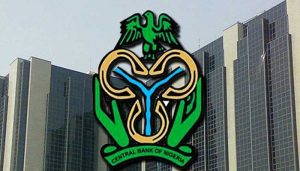
By David Akinmola
Nigeria’s banking sector has seen a significant rise in liquidity holdings, with deposit money banks’ cash reserves with the Central Bank of Nigeria (CBN) surging to ₦4.8 trillion as of late October 2025, reflecting improved liquidity in the financial system and cautious reserve management amid tighter monetary conditions.
According to market data and industry analysts, the increase in banks’ cash deposits with the apex bank signals a combination of factors including higher inflows from government spending, improved oil receipts, and sustained mop-up operations through the CBN’s Open Market Operations (OMO). The development comes even as the CBN maintains its aggressive stance on curbing inflation and stabilizing the naira.
Analysts say the rising reserve balances underscore the CBN’s ongoing effort to manage excess liquidity, which can otherwise fuel inflationary pressures and weaken the exchange rate. “The CBN has been sterilizing a portion of banking sector liquidity to control inflation expectations,” said a senior analyst at Afrinvest Securities. “However, with cash reserve balances now approaching ₦5 trillion, there are concerns about the opportunity cost for banks and the knock-on effect on credit growth.”
Under the CBN’s monetary policy framework, banks are required to maintain a Cash Reserve Ratio (CRR) of 45 per cent for commercial banks and 14 per cent for merchant banks one of the highest ratios globally. The apex bank has also been debiting banks’ accounts for failing to meet stipulated reserve or lending targets, effectively tightening the flow of loanable funds in the economy.
Market sources noted that part of the liquidity buildup stems from recent maturities of government securities and fewer credit disbursements to the private sector, as banks adopt a more conservative lending posture due to high credit risk and elevated interest rates.
Data from the National Bureau of Statistics (NBS) and CBN’s monetary survey indicate that broad money supply (M3) has continued to expand, crossing ₦98 trillion in September 2025 a 66 per cent year-on-year increase. The expansion has been driven largely by government borrowing, currency in circulation, and deposit growth within the banking system.
Financial market operators warn that while high liquidity levels reflect a relatively stronger financial system, they also present a delicate challenge for monetary authorities striving to balance inflation control with economic growth. “The key question is how the CBN will manage this liquidity without choking the real economy,” said a treasury dealer with one of the Tier-1 banks.
The interbank money market has remained stable despite the liquidity surge, with overnight rates averaging between 12 and 15 per cent, aided by consistent CBN interventions through repo and OMO auctions. However, some analysts predict a potential uptick in rates if the CBN intensifies liquidity sterilization or raises the Monetary Policy Rate (MPR) beyond the current 26.75 per cent to rein in inflation.
For now, the surge in banks’ reserves at the CBN underscores a cautious approach by lenders prioritizing balance-sheet strength and regulatory compliance amid an uncertain macroeconomic environment.
With the inflation rate still hovering around 28 per cent, the naira trading near ₦1,600/$ at the official window, and credit growth slowing, the coming months could test the CBN’s ability to calibrate liquidity management without undermining economic recovery.
As one market analyst summed it up, “Nigeria’s banking sector is liquid — but not lending enough. That’s the paradox the CBN must resolve in the months ahead.”






